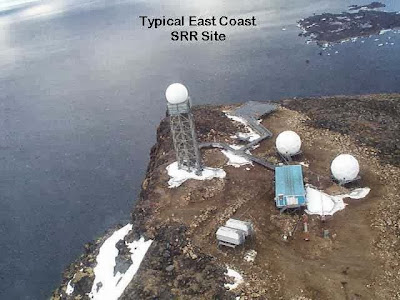 |
| Russian Tupolev Tu-154M-ON at Ottawa International Airport Original: http://www.flickr.com/photos/53158134@N02/9783788494 |
Scrounging through dusty Cold War stories, I'm used to tales of Soviet-American tension, the Cuban missile crisis, heightened states of alert, drill upon drill of American and Soviet bombers; each playing a dangerous game of chicken. I thought most of those tensions disappeared with the end of the Cold War, with the end of the Soviet state, and with the fall of the Berlin Wall. Maybe some of them, but world military superpowers still exist, there are still treaties on nuclear disarmament, non-proliferation, chemical weapons, and all sorts of other agreements. Adherence needs to be verified, by all signatory parties.
I guess somewhere in the back of my mind I knew there would need to be arms inspectors ensuring everyone was playing by the rules, but I certainly didn't think Russian planes would be flying in Canadian airspace, decked out with sensors; optical, IR, radar, etc. looking down on Canadian soil, ensuring we were playing by the rules. I don't mean that Canada is above the law, I mean I thought that was all done by Satellite by now - after all, if I can tell the type and model of a car in a parking lot using Google Maps, or Bing Maps - surely the Russian military must have better imagery, no? That was why I was surprised to see this press release, quite after the fact;
Russian observation aircraft takes to Canadian skies under international treatyThe Treaty on Open Skies?
NR-13.229 - July 13, 2013
OTTAWA – A Russian Federation aircraft will conduct aerial observation flights over Canada under the Treaty on Open Skies during the period July 17 to 19, 2013.
The unarmed Tupolev TU-154M aircraft, which arrived at 8 Wing Trenton today, will be accorded Russia’s legal right of unimpeded observation overflight of Canadian territory, in fulfilment of Canada’s obligations as a State Party to the Treaty on Open Skies. Using an array of onboard sensors, the aircraft can observe and verify objects of interest or concern, such as military sites, industrial centres, communications facilities and transportation hubs... -Canada News Center
"...a program of unarmed aerial surveillance flights over the entire territory of its participants. The treaty is designed to enhance mutual understanding and confidence by giving all participants, regardless of size, a direct role in gathering information about military forces and activities of concern to them. Open Skies is one of the most wide-ranging international efforts to date promoting openness and transparency of military forces and activities. The concept of "mutual aerial observation" was initially proposed to Soviet Premier Nikolai Bulganin at the Geneva Conference of 1955 by President Dwight D. Eisenhower; however, the Soviets promptly rejected the concept and it lay dormant for several years. The treaty was eventually signed as an initiative of US president (and former Director of Central Intelligence) George H. W. Bush in 1989. Negotiated by the then-members of NATO and the Warsaw Pact, the agreement was signed in Helsinki, Finland, on March 24, 1992." -WikipediaOkay, now I know that Russians fly over Canadian airspace, spying on us, with our consent - and conversely, all of the other signatory parties do the same; Canadians over Russia, Russians over the United States, etc.. Here is a list of all the flights conducted in 2012 published May 21st 2013 (link).
After such overflights, the imagery is then shared with all the participants in the treaty, including the host state who's land was photographed. From another fantastic open source document I learned the imagery is supposed to be up to 0.3M in resolution, better than Google Satellite imagery (link).
So how does this interest me? Well, the Russians are overflying and photographing "military sites, industrial centres, communications facilities and transportation hubs" many of which line up with my Cold War interests, since many bases or stations which have not been abandoned or sold off have a Cold War connection; CFB Borden, CFB Goose Bay, CFB Comox, CFB North Bay, etc... I make an effort to NOT show up at active Canadian Forces bases or stations with a camera in hand, not because I'm not interested, but because I don’t want to be accused of espionage for the Russians. However, if the Russians are giving the Canadian Government pictures of Canadian bases - why wouldn’t that imagery be public? I also don't know the flight paths of the Russian planes, so I don’t know if they're overflying anywhere else of interest (like Ramore, Chibougamau, old GATR sites, etc..) Are those flight paths classified? Again, I wonder why - as the Russians are filing their flight plan more than 72hrs in advance of their flight to ensure Canadian Forces agreement and proper notification. If they know, and we know; what's the big secret?
I'm going to make some inquiries about the imagery, it would be very interesting to review these recent and high resolution air photos for locations which are along the lines of my interests, especially if they're already georeferenced and importable into Google Earth.



































